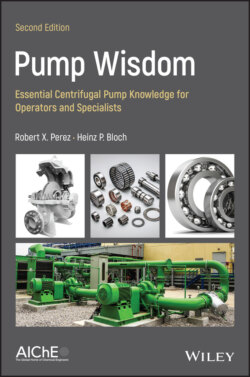Читать книгу Pump Wisdom - Robert X. Perez - Страница 29
What We Have Learned: Checklist of Foundation and Baseplate Topics
ОглавлениеUse ultrastiff, epoxy‐filled formed steel baseplates (“StayTru®” method or an approved equivalent) on new projects and on optimizing existing facilitiesProceed by first inverting and preparing the baseplate; use recommended grit blasting and primer paint techniques.Fill with suitable epoxy grout to become a monolithic block. Allow to cure; after curing, turn over and machine all mounting pads flat and coplanar within 0.0005 in./ft (0.04 mm/m).Next, install complete baseplate on pump foundation. Anchor and level it within the same accuracy.At final installation, place epoxy grout between the top of the foundation and the space beneath the monolithic epoxy prefilled baseplate.
On welded baseplates, make sure that standard thickness steel is used and that the welds are continuous and free of cracks.
On pump sets with larger than 75 kW (100 hp) drivers, ascertain that baseplates are furnished with eight positioning screws per casing, i.e. two screws (“jacking bolts”) per mounting pad:These positioning screws could be located in removable tabs (i.e. tabs slipped into a welded guide bracket) or fixed tabs (i.e. tabs welded onto the baseplate).Pad heights must be such that at least 1/8 in. (3 mm) stainless steel shims can be placed under driver feet.
Conventional baseplates must be installed and grouted on foundation with pump and driver removed. Only then should pump and driver be reinstalled and leveled.
Epoxy‐prefilled baseplates can be installed and grouted on a foundation with pump and driver already aligned and bolted down on the baseplate.
